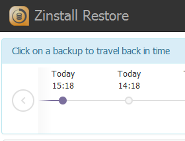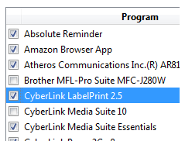In this article, we’ll learn how to easily backup your entire computer to your OneDrive. Not just files (those you can just drag to OneDrive); we are talking about having a backup of your programs, applications, accounts, settings, profiles, personalization and all files (not just the ones in your OneDrive folder).
Microsoft OneDrive already serves many of its users as an impromptu backup solution, for some of the more important files. However, it is in no way a complete backup product. Out-of-the-box, OneDrive only allows you to manually sync a file with other computers and with OneDrive Cloud storage. You cannot tell it to backup all of your files, it is not automatic, and you definitely cannot backup anything which is not a file (apps, user profiles, settings etc.).
This tutorial demonstrates how to use a combination of OneDrive and Zinstall FullBack software to create a powerful backup, which automatically protects your entire computer, and saves your backup both locally and on OneDrive Cloud. Backups are done automatically: you don’t need to “babysit” them or remember to run a backup. You just have everything stored in your OneDrive (backups are encrypted, so even if OneDrive gets hacked, your stuff is safe). Most importantly, when disaster strikes, you can restore your stuff to a completely different computer, including applications, program files, apps, settings, profiles, emails, accounts, passwords, documents, pictures, music and, of course, all of your files.

So what happens now? Zinstall FullBack will first make a full backup of your entire Windows 11 or Windows 10. This means every file, every program, every setting you have there – all backed up and protected. It will be safely stored in your OneDrive folder on the computer itself, and OneDrive will then sync the backup files to its Cloud storage.
[Note of course that you do need to have enough space available in your OneDrive folder; for most computers, you’ll need the paid OneDrive option to have enough space.]
After that, it will keep backing up any changes you make to the computer, once every hour. So if you change a file, or install a new program, your backup will be updated accordingly within 60 minutes. This is all done completely automatically. In fact, you probably won’t even feel it running. It is very efficient in handling just the changes made, and even protects the hard drive’s health, by minimizing the amount of reads and writes to it (this makes the drive live longer!)
Of course, the real reason you have a backup is the restore part. How do you restore a single file that you’ve misplaced? And how do you restore everything, including program files, if your computer crashes? Read on to find out.
So you were working on an important document, and now it’s gone. Fear not – that’s exactly why you have set up an automatic backup of your entire Windows 11 or Windows 10! Here is what you do:

That’s it – your file is back and unharmed.
This is something you can only do if you have used Zinstall FullBack. It can actually restore all the stuff from your backed up computer (programs, settings, files, emails, accounts, password, favorites, documents, pictures, music, etc.) onto a completely different computer and completely different Windows. Even if you’ve backed up a Windows 7 32bit Dell, and your replacement PC is a Windows 11 64bit HP, Zinstall will still restore everything you’ve got.

To do that, install OneDrive and Zinstall FullBack on the replacement computer. Run Zinstall FullBack, select your OneDrive as backup source, and follow the prompts for complete restore. When finished, just restart the computer, and you’ll see all the programs, settings and files from your crashed computer.
OneDrive is one of the most popular consumer Cloud storage solutions on the market. By using Zinstall FullBack and OneDrive together, you get a complete, automatic, always on backup of your entire Windows 11 or Windows 10 PC, including all programs, settings and files – both locally and on OneDrive Cloud.
It is extremely easy to set up. You do not have to connect any equipment to the computer itself, or even remember that you have a backup. It is all automatic.
And when you accidentally delete a file, or when your computer crashes, you will be able to recover efficiently and completely – and will thank yourself for taking the right precautions well in advance.